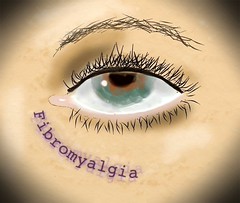Myofascial Pain Syndrome (MPS) And Fibromyalgia
Source: fibromyalgia-symptoms.org
“Many of those already suffering from the pain of fibromyalgia also suffer from myofascial pain syndrome. Myofascial pain syndrome is another form of chronic pain that can affect the entire body, particularly the face and jaw. Myofascial pain can add to the already annoying symptoms of fibromyalgia, and can contribute to disability and a poor quality of life if not diagnosed properly. If you think that you may be suffering from myofascial dysfunction, visit with your health care provider to discuss your treatment options.
What is Myofascial Pain Syndrome?
Myofascial syndrome is a pain disorder that affects the muscles and fascia throughout your body. Fascia is like a web that surrounds the bones, tissues, organs, and blood vessels throughout the body. Myofascial pain syndrome can attack and cause degeneration of certain areas of the fascia, resulting in chronic pain and a variety of other symptoms.
Pain usually originates in specific areas of the body, called myofascial trigger points (TrPs), which feel like tiny nodules under the skin. These trigger points commonly develop throughout the body, typically where the fascia comes into contact with a muscle.
Myofascial pain syndrome is a very common illness, and most people will develop at least one trigger point in their body at some point in their lives. The majority of these people will not develop severe symptoms and will be able to continue on with their normal routines. However, about 14% of the population will develop a chronic form of the syndrome, resulting in persistent pain and discomfort.
Myofascial pain disorder is very common in fibromyalgia sufferers. It was once thought that myofascial pain syndrome was actually a kind of fibromyalgia. However, this is now known not to be the case. It is possible to have both fibromyalgia and chronic myofascial syndrome, and therefore it is important to be diligent when analyzing your symptoms. If you notice myofascial syndrome symptoms, record them and report them to your doctor.
Signs and Symptoms of Myofascial Pain Syndrome:
The most common sign of myofascial pain is the presence of palpable trigger points in your muscles. Trigger points are areas of extreme tenderness and sensitivity, and usually form in bands of muscle underneath your skin. They are similar to the tender points caused by fibromyalgia, only trigger points can be felt beneath the skin. When touched, trigger points will produce pain and twitching in the muscles. Often, pain is felt in an area distinct from the trigger point that is actually affected – this is called referred pain.
The pain of myofascial syndrome is typically a dull ache, but can also produce a throbbing, stabbing, or burning sensation. Pain is often located in the jaw area, though any part of the body can be affected. One-third of myofascial pain sufferers report localized pain, while two-thirds report having pain all over their bodies.
Myofascial pain can also produce a variety of other symptoms, many of which may appear unrelated. These include:
* numbness in the extremities
* popping or clicking of the joints
* limited movement of joints, particularly the jaw
* muscle weakness (manifested in dropping things)
* migraine or headache
* disturbed sleep
* balance problems
* tinnitus and ear pain
* double vision or blurred vision
* problems with memory
* unexplained nausea, dizziness, and sweating
Aggravating Factors
Symptoms are often aggravated by specific factors. Stress and anxiety contribute to muscle tension and can irritate trigger points. Changes in the weather, including sudden coldness, high humidity, or extreme dryness can also exacerbate symptoms. Physical activity can also trigger symptoms.
Causes of Myofascial Pain Syndrome
There are numerous proposed causes of myofascial pain:
Muscle and Skeletal Problems:
The causes of myofascial pain dysfunction syndrome can be numerous and depend upon the individual. Generally, myofascial pain is caused by some sort of trauma to the muscles and skeleton in the body. Overworking of the muscles can cause damage to certain areas resulting in the development of a trigger point. Poor posture can also trigger myofascial pain in certain individuals. Skeletal abnormalities, such as having different sized feet, toes, or legs, can also contribute to the development of myofascial pains. Frequent exposure to cold weather may also increase the risk of developing chronic myofascial pain syndrome.
Chronic Fibromyalgia Pain:
People with fibromyalgia may get myofascial pain syndrome as a result of their fibromyalgia pain. Compensating for pain can often cause reduced movement or an unhealthy posture, leading to the formation of trigger points. The severe pain caused by fibromyalgia also causes muscle contractions around tender points, referred to as guarding. Eventually these muscle contractions cause trigger points to form in addition to the tender points of fibromyalgia.
Depression Associated with Fibromyalgia:
The depression associated with fibromyalgia may also cause myofascial pain to develop. At least 30% of fibromyalgia patients suffer from depression, which causes low levels of serotonin in the brain. Serotonin is a neurotransmitter responsible for regulating mood and pain in the body. Depression may interfere with the process of regulating pain, causing MPS.
Effects of MPS on Fibromyalgia:
Having both myofascial pain syndrome and fibromyalgia can be quite trying at times. Symptoms of MPS and fibromyalgia are very similar, making it difficult for medical professionals to properly diagnose many people. Without proper diagnosis, a patient may not receive appropriate treatment, causing his or her symptoms to become even worse. In addition, myofascial pain can often contribute to the pain caused by fibromyalgia, making life much more difficult to enjoy.









You must be logged in to post a comment.